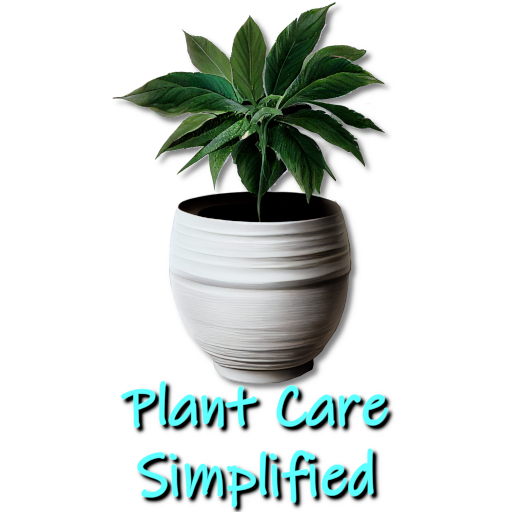How Much Water Does A Plant Need Per Day -Discover the Secret to Perfectly Watered Plants
Kim is passionate about helping people create beautiful, healthy indoor spaces that are filled with plants. Kim believes that plants make us happier, healthier human...
It is impossible to answer how much water a plant needs daily with any certainty as it depends upon numerous factors. Instead, a better question to ask is how do you assess the watering needs of a specific plant and deliver that amount of water at the frequency that suits the specific plant?
This article will look in detail at the various factors that affect the water requirements of a plant, how to assess them and how to deliver the right amount of water that a plant needs.
Tips for Finding the Right Balance for Your Specific Plants
| Tips | Explanation |
|---|---|
| Research the specific water needs of your plants: | Different plant types have different water requirements, so it is important to research the specific needs of your plants. This will help you to determine how often to water your plants and how much water they need. |
| Monitor the weather and climate: | The weather and climate can significantly impact a plant's water needs, so it is important to monitor these factors and adjust your watering accordingly. |
| Check the soil moisture: | Checking the soil's moisture level is a good way to determine whether your plants need water. There are a few different ways to do this, such as sticking your finger into the soil or using a moisture gauge or meter. |
| Monitor the amount of light your plant receives: | Different plants have different lighting requirements, and light is a key factor in how plants process the water they receive. The right amount of water starts with the right amount of light. |
| Consider the age of your plants: | Younger plants, especially those that are still establishing their root systems, will generally require more water than mature plants. As plants age, their water needs may change, so monitoring and adjusting your watering accordingly is important. |
| Choose the right watering technique: | There are a few different watering techniques to choose from, such as deep watering or frequent watering, and it is important to choose the right technique based on the needs of your plants. |
| Water at the right time: | The time of day that you water your plants can also impact their health. Watering in the morning is generally the best option because it allows the plants to absorb the water before the day's heat. |
| Watch for signs of under or over-watering: | It is important to be able to recognize the signs of under- or over-watering so that you can adjust your watering habits accordingly. Common signs include wilting leaves or yellowing foliage, dry or crusty soil, and stunted growth. |
Importance of Water in Plant Growth and Health
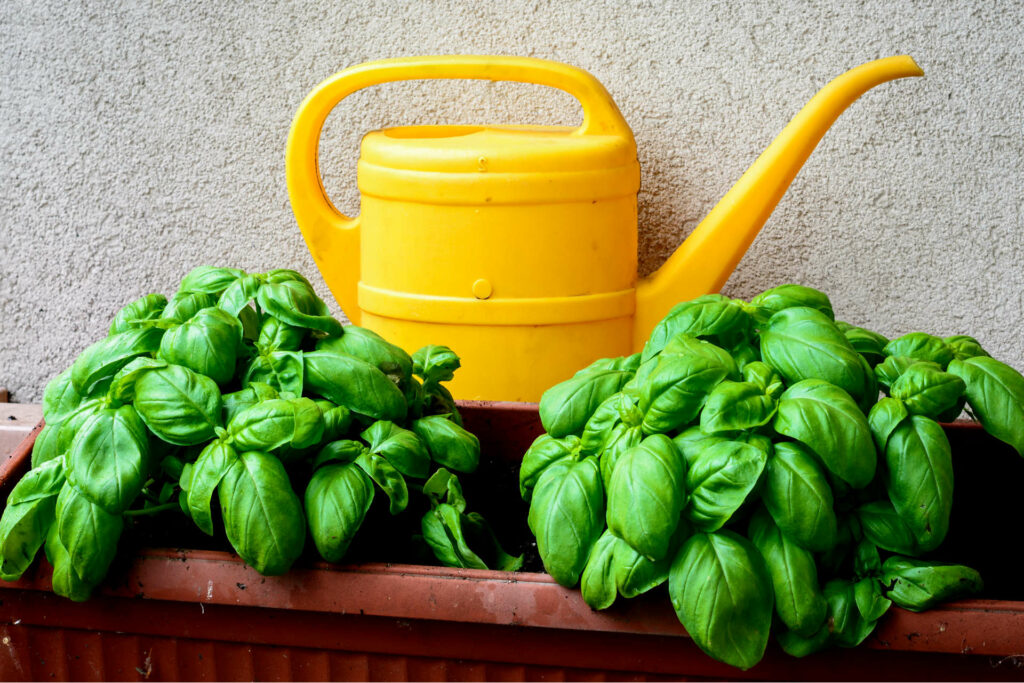
Water is essential for all living things, and plants are no exception. Water helps to transport nutrients from the soil to the plant's roots, leaves, and flowers, and it also helps to regulate the plant's temperature and protect it from external stressors. Without enough water, plants will wilt, become stressed, and may eventually die.
Proper watering is essential during active growth, such as when a plant is flowering or producing fruit. A lack of water can inhibit these processes and result in smaller or fewer blooms or fruit. On the other hand, supplying a plant with the right amount of water can help it to thrive and reach its full potential.
In addition to its role in plant growth and development, water is also essential for soil health. Proper watering helps maintain the soil's structure and prevent it from becoming compacted. It also helps to control the population of soil-dwelling organisms, such as bacteria and fungi, which can benefit/improve plant health.
Factors that Affect a Plant's Water Needs
Many factors can affect a plant's water needs, including climate and weather conditions, soil type and drainage, plant type and size, and the age of the plant.
Climate and weather conditions significantly affect a plant's water needs. Plants will require more water to stay hydrated in hot, dry conditions; on the other hand, they will need less in cooler, wetter conditions. It is crucial to monitor the weather and adjust your watering accordingly to ensure that your plants get the right amount of water.
Soil type and drainage can also affect a plant's water needs. Soil with good drainage will allow excess water to drain away, preventing root rot and other issues. Conversely, soil with poor drainage may not allow excess water to drain away, leading to over-watering and other problems. Choosing suitable soil or growing medium for your plants significantly impacts watering needs, so test the drainage before watering to ensure that you are providing the right amount of water.
Plant type and size are also important considerations when it comes to watering. Various plant types have different water requirements, and larger plants generally need more water than smaller ones. Researching your plants' specific water needs and adjusting your watering accordingly helps maintain healthy plants.
Finally, the age of a plant can also affect its water needs. Younger plants, especially those that are still establishing their root systems, will generally require more water than mature plants. Their water needs may change as plants age, so monitoring and adjusting your watering to needs is essential.
How to calculate water needs
Using soil moisture as a guide
One of the most effective ways to determine whether your plants need water is to check the soil's moisture level. There are a few different ways to do this:
Stick your finger into the soil: This is a simple and effective way to check the soil's moisture level. Stick your finger about an inch into the soil. If the soil is dry up to your first knuckle, it's time to water. The plant probably doesn't need water if the soil is damp or moist up to your first knuckle.
Use a moisture gauge: Moisture gauges are inexpensive and widely available at gardening stores and online. Insert the gauge into the soil, and it will give you a reading of the moisture level. Follow the manufacturer's instructions for how to interpret the readings.
Use a moisture meter: Moisture meters work similarly to moisture gauges but often provide more accurate readings. Insert the probe into the soil; the meter will display the moisture level. Follow the manufacturer's instructions for how to interpret the readings.
By using one of these methods to check the soil's moisture level, you can get a good idea of whether your plants need water and how much they need. It's essential to remember that soil moisture can be affected by several factors, such as weather (if outside) and soil type, so it's always a good idea to use your judgment.
Estimating Water Requirements Based on Plant Size and Type
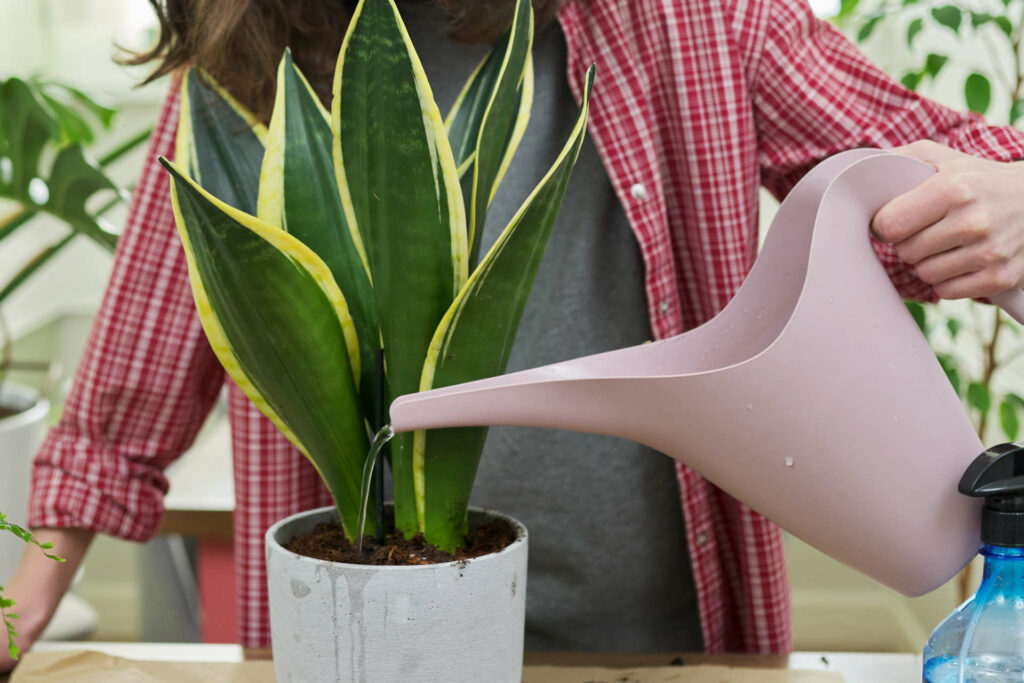
While checking the soil moisture is a valuable way to determine whether your plants need water, it's also essential to consider the size and type of your plants when choosing how much water they need. Here are a few tips for estimating water requirements based on plant size and type:
Small plants: Small plants, such as herbs and annuals, generally have a smaller root system and therefore need less water than larger plants.
Medium-sized plants: Medium-sized plants, such as shrubs and perennials, will have a more extensive root system and need more water than small plants.
Large plants: Large plants, such as trees and vines, have an even larger root system and will therefore need even more water. .
The actual water needs of your plants may vary based on many other factors, such as plant species, climate, and soil type/growing medium. It's always a good idea to research the specific needs of each of your plants.
Factors that affect a plant's water needs
Climate and Weather Conditions
Climate and weather conditions can significantly affect a plant's water needs. Plants will require more water to stay hydrated in hot, dry conditions; on the other hand, they will need less in cooler, wetter conditions. Monitor the weather and adjust your watering accordingly to ensure that your plants get the proper amount of water.
For example, during drought or extreme heat, you may need to water your plants more frequently to ensure that they have enough water to survive. On the other hand, during periods of heavy rain or cool weather, you may need to water your plants less frequently to prevent over-watering.
It would be best to consider the humidity level when watering your plants. Plants may not need as much water in high-humidity environments because the air is already moist. Plants may need more water in low-humidity environments because the air is dry.
By paying attention to the climate, both internal for houseplants and climate and weather conditions for an external garden plant, you can adjust your watering to suit.
How Light Affects Plants Watering Requirements
The amount of light that a plant receives can also affect its water needs. Plants that receive more light require more water than those that receive less sunlight. This is because light increases the rate of transpiration, the process by which plants lose water through their leaves. As a result, plants exposed to more light will transpire more water and therefore need to be watered more frequently.
You should monitor the amount of light your plants are receiving to adjust your watering accordingly. For example, if you have plants exposed to full sun, they may need to be watered more frequently than those in a shaded area. On the other hand, plants that need more light may not transpire as much water and therefore require less frequent watering.
It's also worth noting that the type of light your plants receive can impact their water needs. For example, plants exposed to artificial light may not transpire as much water as those exposed to natural light. This is because natural light is more intense and has a wider spectrum, which can increase the transpiration rate.
By monitoring the amount of light your plants are receiving and adjusting your watering accordingly, you can help ensure that they get the right amount of water to stay healthy and thrive.
Soil Type and Drainage
Soil type and drainage can significantly affect a plant's water needs. Different soil types have differing water retention properties, impacting the plant's water needs. For example, sandy soil drains quickly and may require more frequent watering, while clay soil retains moisture longer and may require less frequent watering.
Proper drainage is also vital for the health of your plants. Soil with good drainage will allow excess water to drain away, preventing root rot and other issues. Conversely, soil with poor drainage may not allow excess water to drain away, leading to over-watering and other problems. Choosing suitable soil/growing medium for your plants and testing the drainage before watering ensure that you provide the right amount of water.
There are a few ways to improve soil drainage:
- Add organic matter: Adding compost, peat moss, or other organic matter to the soil can help improve its structure and drainage.
- Use raised beds or containers: If you have poor soil drainage, consider planting your plants in raised beds or containers, which can help improve drainage.
- Install a drainage system: If you have plants in containers or in an area with poor soil drainage, you may need to install a drainage system to ensure that excess water can drain away.
Alternative Growing Mediums
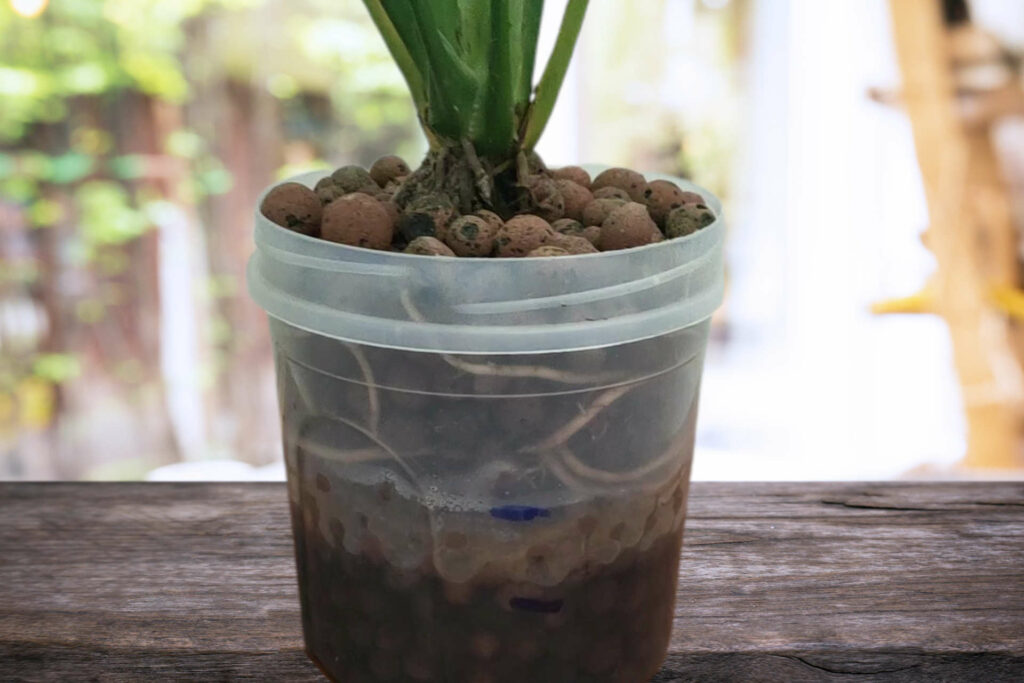
In addition to soil, a few other growing mediums can be used to grow plants, such as expanded clay aggregate and coco coir. These mediums have different water retention properties and may require different watering techniques.
Expanded clay aggregate, also known as LECA or hydroton, is a lightweight, porous clay often used in hydroponic and passive systems. It is known for its good drainage and ability to hold onto moisture. When watering plants in LECA, monitor the oxygen levels in the water/nutrient solution as lack of oxygen can lead to root rot and other issues,
Coco coir is another popular growing medium that is made from coconut husks, and it is known for its good drainage and ability to hold onto moisture. When watering plants grown in coco coir, you should soak the medium thoroughly and allow it to drain completely before watering again. As with LECA, it is essential to monitor the moisture level of the medium carefully to avoid over-watering.
Understanding the unique water retention properties of these growing mediums and adjusting your watering accordingly can help ensure that your plants get the right amount of water to stay healthy and thrive.
Age of The Plant
The age of a plant can also affect its water needs. Younger plants, especially those that are still establishing their root systems, will generally require more water than mature plants. As plants age, their water needs may change, so monitoring and adjusting your watering to suit is important.
For example, newly planted seeds or seedlings will generally require more frequent watering to help them establish their root systems. As the plants grow and mature, their water needs may decrease. On the other hand, mature plants may require more water to support these processes in their active growth phase, such as flowering or producing fruit.
It's also important to consider the time of year when watering your plants. Plants may need more water during the warmer months due to increased evaporation and transpiration. On the other hand, during the cooler months, they may need less water due to reduced transpiration.
Watering Techniques
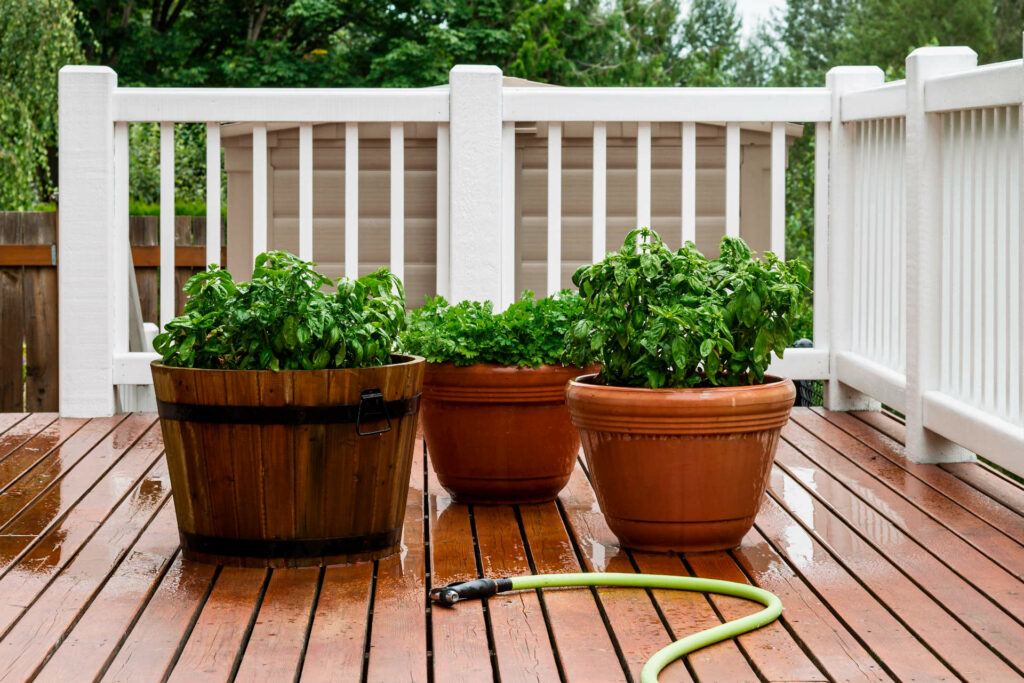
There are a few different watering techniques that you can use to ensure that your plants are getting the right amount of water. Here are some tips for each method:
Deep Watering vs. Frequent Watering:
One of the key considerations when watering your plants is whether to use deep watering or frequent watering. Deep watering involves watering the plants thoroughly and allowing the soil to dry out slightly before watering again. This helps to encourage deep root growth and can be beneficial for drought-tolerant plants.
On the other hand, frequent watering involves watering the plants more frequently, but in smaller amounts. This can be helpful for plants that are prone to drought stress or that have shallow root systems.
Choosing the right watering technique based on the needs of your plants and the climate in which you are growing them will help them greatly.
Using a Watering Can, Hose, or Irrigation System:
There are a few different tools you can use to water your plants, each with its advantages and disadvantages.
A watering can is a simple and effective tool for watering small plants or areas, and it is easy to use and allows you to control the amount of water you apply. However, watering larger areas or plants with watering can take time and effort.
A hose is a good option for watering larger areas or plants. It is quick and efficient, but it can be challenging to control the amount of water applied.
An irrigation system, such as drip irrigation or a sprinkler, can be a good option for watering larger areas or providing a consistent water supply to your plants. However, these systems can be expensive to install and require more maintenance.
Watering in The Morning or Evening:
The time of day that you water your plants can also impact their health. Watering in the morning is generally the best option because it allows the plants to absorb the water before the day's heat. Watering in the morning also helps to reduce the risk of fungal diseases, as the leaves have time to dry off before evening.
On the other hand, watering in the evening can be problematic because the water can sit on the leaves overnight, increasing the risk of fungal diseases. Additionally, watering in the evening can cause the leaves to stay wet for a more extended period, which can encourage the growth of weeds.
Watering in the morning is generally the best option for most plants. However, it's always a good idea to research the specific watering needs of your plants to ensure that you are providing the right amount of water at the right time.
How Long Can a Plant Go without Water
How long a plant can survive without water depends on various factors, including the type of plant, the climate, and the soil conditions. Some plants are more drought-tolerant than others and can survive longer without water. In general, however, most plants will show signs of stress within a few days of being without water.
A key factor affecting a plant's ability to survive without water is its root system. Plants with deep, well-established root systems are generally more drought-tolerant than shallow ones. This is because deep roots allow the plant to access water and nutrients from deeper in the soil, which can help it to survive during dry periods.
The climate and soil conditions can also impact a plant's ability to survive without water. Plants may need more frequent watering in hot, dry climates to stay hydrated. On the other hand, plants may survive more extended periods without water in cooler, wetter climates. Similarly, soil with good drainage and high organic matter content can help retain moisture, allowing plants to survive longer periods without water.
It's important to note that while some plants may be able to survive for short periods without water, they will ultimately suffer from drought stress if they are not watered periodically. To ensure the health and survival of your plants, it is crucial to regularly provide them with the right amount of water.
Signs of Under or Over-Watering
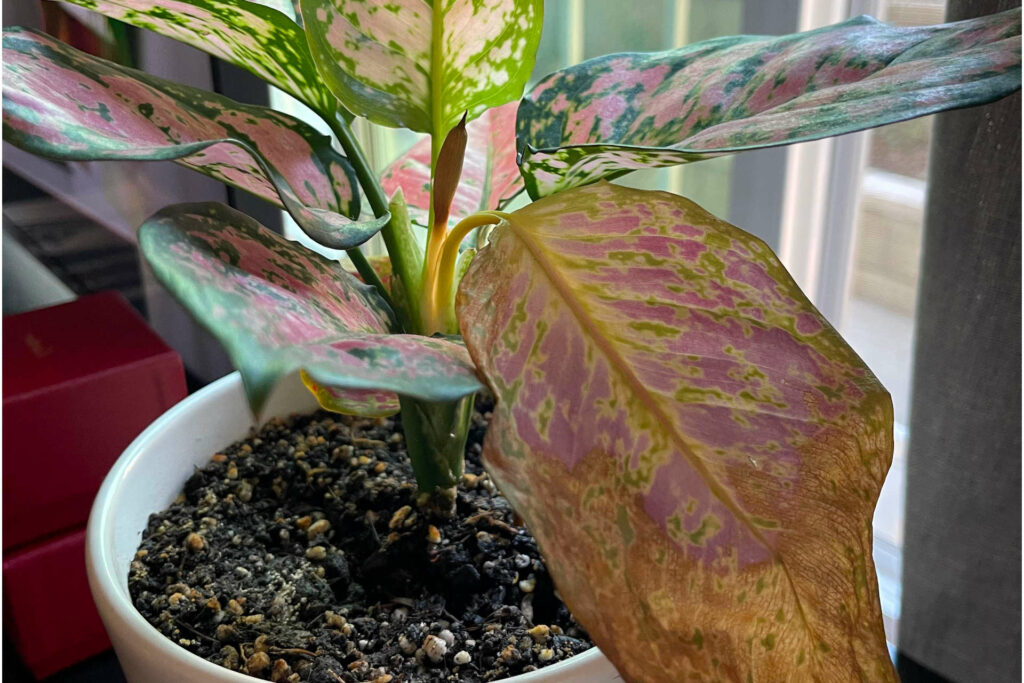
Proper watering is essential for the health of your plants, and you should learn to recognize the signs of under or over-watering so that you can adjust your watering habits accordingly. Here are some common signs to look for:
Wilting Leaves or Yellowing Foliage:
Wilting leaves or yellowing foliage can be a sign of under-watering. When a plant is underwatered, the leaves may wilt or droop because they are not getting enough moisture. In severe cases, the leaves may also turn yellow or brown. If you notice these symptoms, it is important to water your plants immediately and to adjust your watering habits to ensure they are getting enough water in the future.
Dry or Crusty Soil:
Dry or crusty soil can be a sign of over-watering. When soil is overwatered, the excess water can cause the soil to become compacted, leading to poor drainage and reduced oxygen levels. This can lead to dry, crusty soil and can be detrimental to the health of your plants. If you notice compacted soil, it is essential to aerate and add an amendment to improve the soil structure.
With houseplants, if you are faced with compacted soil/potting mix, it is time to re-pot and change the soil for a potting mix.
Stunted Growth:
Stunted growth can be a sign of both under-watering and over-watering. When a plant is underwatered, it may not have enough moisture to support proper growth. On the other hand, when a plant is overwatered, the excess water can lead to poor soil drainage and reduced oxygen levels, which can also inhibit growth.
If you notice that your plants are not growing as they should, then you should look to establish the cause, and if because of water habits, adjust your watering habits and to ensure that your plants are getting the right amount of water.
If you are aware of these signs of under or over-watering, you can adjust your watering habits accordingly. This will help ensure that your plants get suitable water to stay healthy and thrive.
Kim is passionate about helping people create beautiful, healthy indoor spaces that are filled with plants. Kim believes that plants make us happier, healthier human beings, and she loves sharing her knowledge with others so they can experience the joys of plant care for themselves. <a href="https://plantcaresimplified.com/kim-marson/">Read more</a>
More Posts